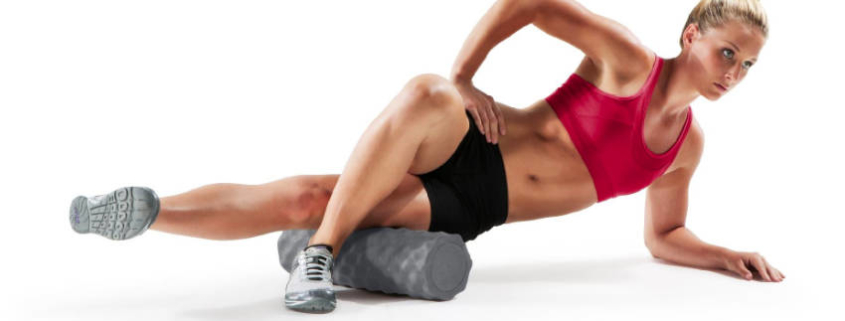Don't Foam-Roll-Massage your Iliotibial Band (IT Band)
Foam rolling has become increasingly popular as a method of self-massage in an effort to work out muscle knots and tension. However, rolling out your iliotibial band, up and down, is likely to make you grimace in pain.
Anatomically, the IT band (ITB) is a longitudinal fibrous band of deep fascia that originates from the gluteus maximus (buttock)and tensor fascia lata (front side of pelvis) then continues as a tendinous, fascial band that runs from the pelvis down along the outside of the thigh to below the knee, attaching on the outside of the lower leg bone (the tibia). The lateral quadriceps, lateral hamstrings, the gluteus maximus, and the tensor fascia lata (TFL) all have a fascial connection to the IT Band.
The iliotibial band contributes to stabilizing the knee and hip during weight-bearing and is constantly in use during standing, walking and running. It may also contribute to energy savings during locomotion by helping swing your leg back and releasing it as the leg swings forward during walking and running.
Faulty overuse movement (repetitive flexion and extension of the knee from running, cycling or other repetitive activities) can become problematic when too much stress is placed on the ITB causing increased friction over the outside of the knee, therefore causing inflammation and pain in the knee or thigh. This is called IT Band Syndrome.
Muscle imbalance due to poor exercise technique, poor exercise choice, muscle weakness, faulty movement patterns, poor biomechanics in the foot, hip or knee, fatigue and increased tension in the surrounding muscles will contribute to creating pain. The TFL and gluteus maximus have an important biomechanical role with IT band. This is because they control the amount of tension on the IT band .
The IT band cannot be stretched because it doesn’t contract. There are no actions of the ITB since the ITB is not a muscle. It’s a totally different structure. Research shows that foam rolling your ITB is a waste of time (1).
Also keep in mind foam rolling doesn’t break up knots or muscle adhesions. Breaking up a muscle adhesion would require a greater level of expertise and appropriate force than what a roller can produce and directing inappropriate force may not be healthy for the tissue anyway.
The IT band pain is actually a symptom of a larger problem. An osteopath will advise you to look at your biomechanics instead.
Because of the complicated nature of a running gait and movement there is not one easy fix. Without getting a full osteopathic examination of your gait and your biomechanics, it is difficult to determine what exercises need to be done to correct the problem. Doing incorrect exercises can cause things to get worse or another problem to arise.
If you are unsure how to do this then seek the help of a trained professional such as an osteopath to evaluate your mechanics, get osteopathic treatment (myofascial release, joint mobilisation, articulation etc), postural advice and put a corrective program in place.
1.Falvey EC, Clark RA, Franklyn-Miller A, et al. Iliotibial band syndrome an examination of the evidence behind a number of treatment options Scand J Med Sci Sports. 2010 Aug;20(4):580–7
View a list of common complains that Osteopathy can assist with
Discovery the benefits of Osteopathy
- What is Osteopathy?
- Adult health issues
- Babies and Children
- During and after pregnancy
- Common Complaints
- Testimonials
- Sports Injuries
- Genral Osteopathy FAQs
- The Science & Reasearch



